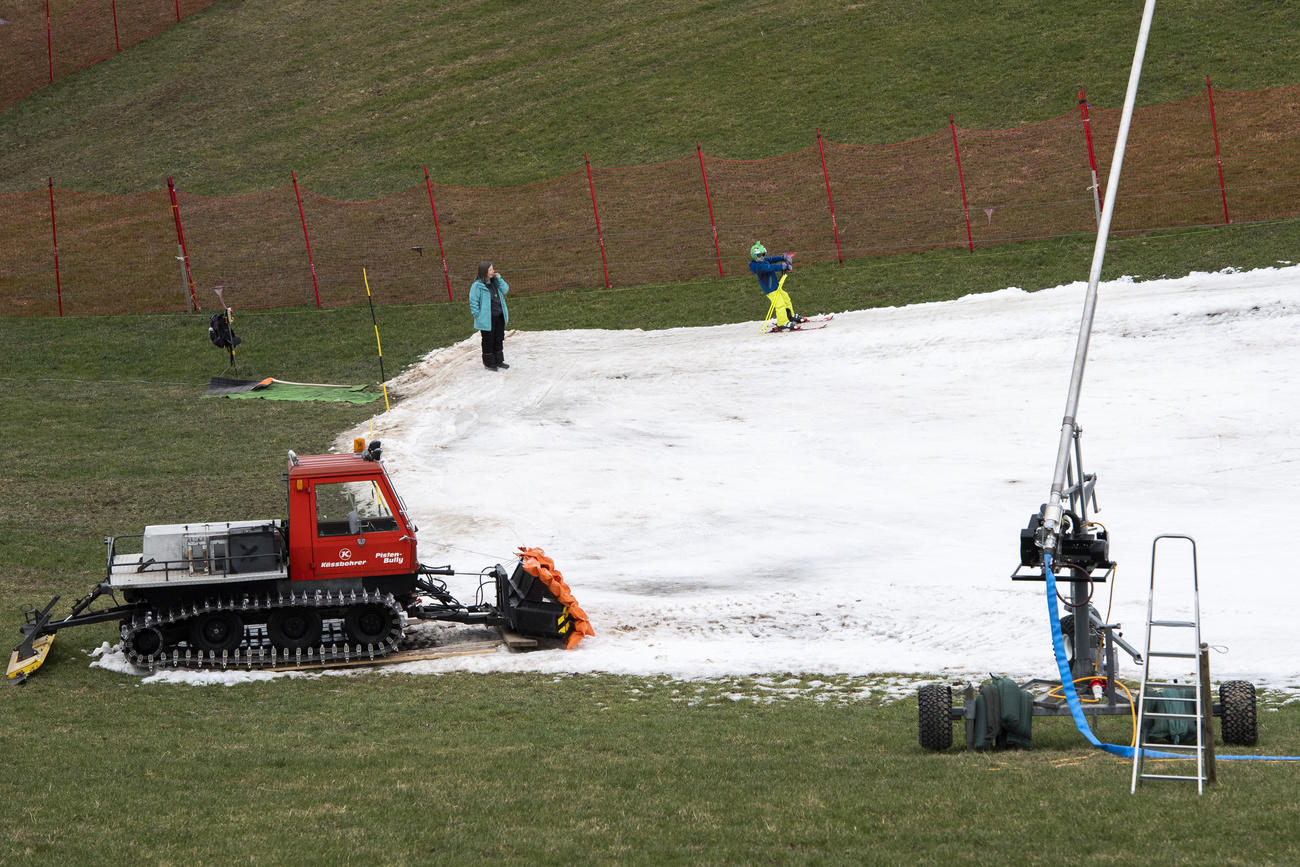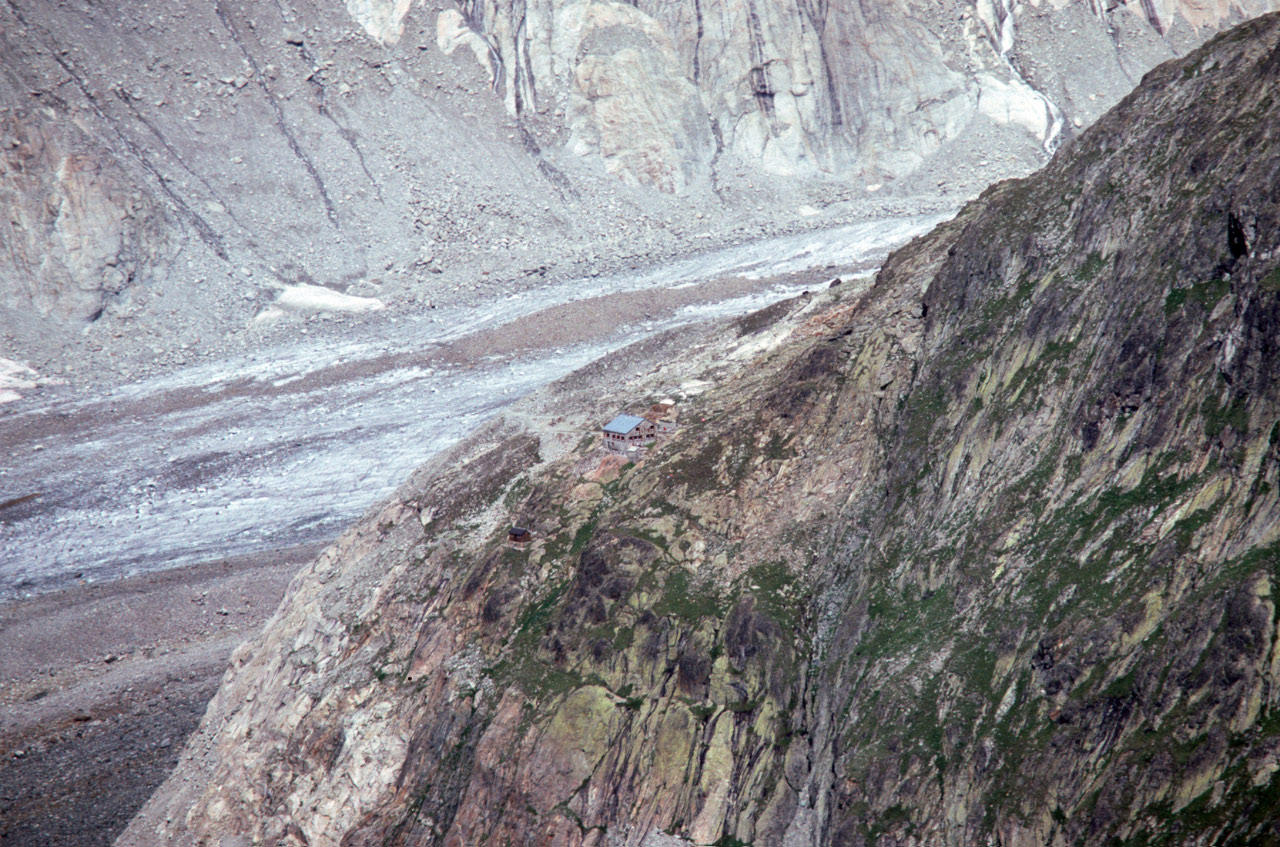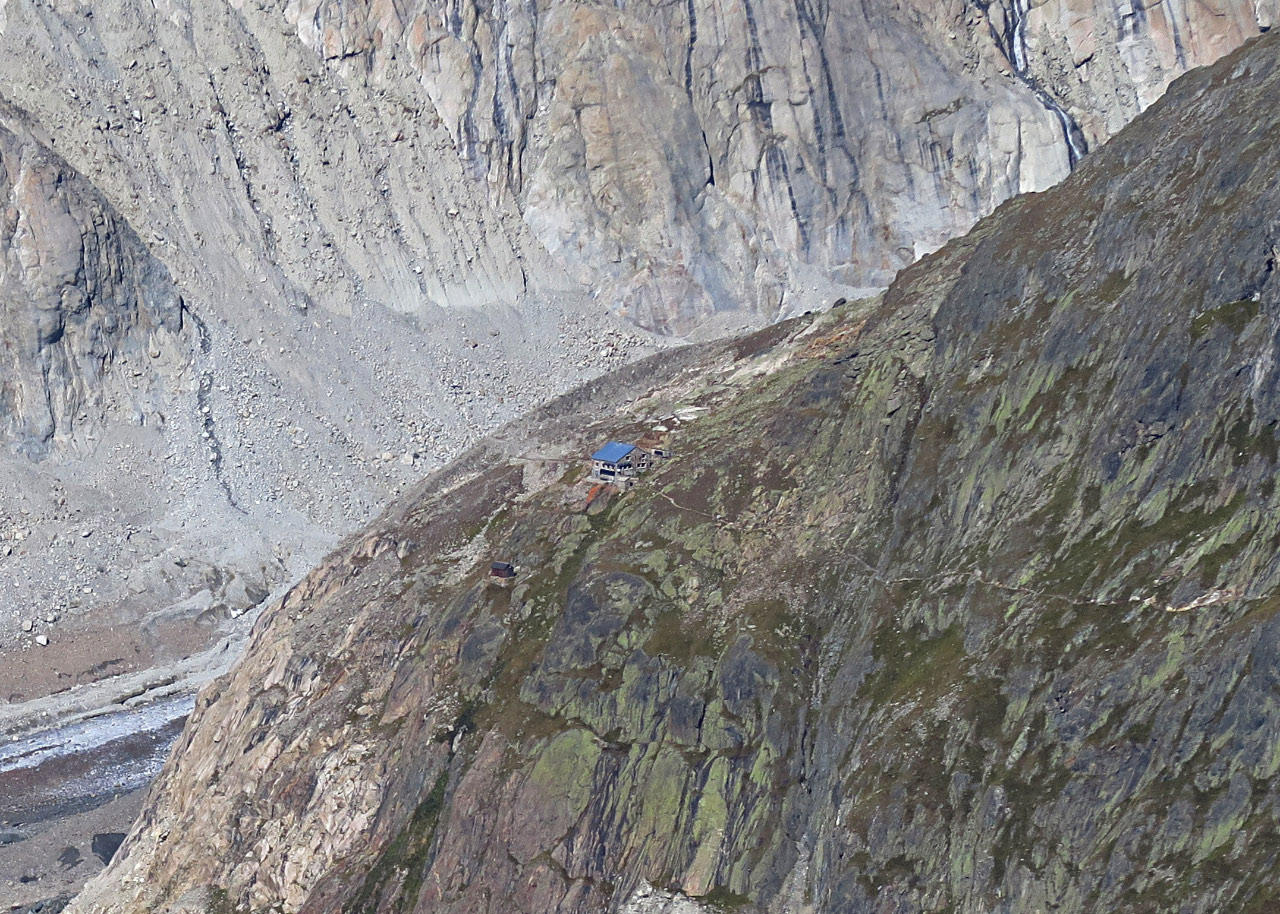What to do when snow is a no-show?
It’s a nightmare scenario if you’re a skier: you’ve taken time off work, booked a chalet or hotel in an alpine resort weeks if not months in advance, and when you arrive there’s little if any snow.
It was the third warmest January in the Swiss Alps since measurements were first taken in 1864. And in many parts of the Alps, it was also the driest.
It confirms what I see as I look at the green hills out my window, lends credence to my father-in-law’s exclamations that he’s never experienced such a dry winter in his eight-odd decades, and explains why the lifts of my local ski hill are closed until further notice.
A quick check of the snow report of the Swiss tourist office shows half of the 93 small ski areas across the Alps and Jura hills not in operation, or at best running only a lift or two.

Appenzell is an example. It’s been possibly the worst season on record for the companies operating the ski lifts in the northeastern area that consists of high hills and low mountains. The local media report that most haven’t been open for skiing at all this winter, with some already deciding to call it quits until 20/21.
The unexpected dry period also had the large resort of Grindelwald excitedly tweeting last week that it had gotten a bit of snowfall.
“Slowly we’re getting there. A slight amount of snow keeps falling,” the tourist office wrote.
Rest assured, there is snow in the Alps, including on the slopes above Grindelwald. In fact, on higher elevations – which is where most of the bigger ski resorts’ slopes are located – there’s enough of a base for piste bashers to work their magic and rake and groom slopes into skiable shape.
But warmer winters and this season’s unusual dry spell have even the largest ski areas worried. Some of them are participating in an EU-funded initiative called PROSNOWExternal link which could offer short-term assistance. The project’s researchers and developers are putting the finishing touches on a forecasting tool to help ski resorts ascertain when conditions are optimal for the deployment of snow cannon.
The instrument pools information drawn from weather services across the Alps and combines the data with the latest research on snow-depth monitoring, in order to finetune snowmaking – when, where and how much.
The tool is already in use in eight pilot resorts across the Alps, including Switzerland’s Arosa Lenzerheide where snow cannon can cover 60% of the slopes.
Snowmaking technology has also provided inspiration for Swiss researchers looking to reverse the retreat of glaciers. They asked: What if you took meltwater that accumulates high on glaciers in summer, and were able to recycle it as snow in winter?
The institutes Academia Engiadina and the University of Applied Sciences Graubünden, both in southeastern Switzerland, have received a federal grant to develop a systemExternal link to do just that.
We first reported on it in our series on glaciers this past summer. Here it is in a nutshell:
The researchers calculate that icesheets can begin to grow again if only 10% of their surface is covered with snow year-round, basing their assumption on analysis of measurements taken over many years on the tongue of the Morteratsch glacier.
They plan to install pipes to funnel the meltwater to a lower section of the glacier where it will flow into a chain of snowmaking cables laid across the ice. Just picture a sprinkler irrigation system and you get the idea.
If successful, the project leaders argue the technique could be applied to any of the world’s mountain regions, where glaciers are vital for providing drinking water for hundreds of millions of people.
In my previous newsletter, I posted two images submitted by a reader to illustrate just how quickly glaciers are shedding ice. They were of the Gorner Glacier above Zermatt.
That encouraged mountaineer and Switzerland resident David Myers to send me the following two photos he took from the same spot, 30 years apart (1986-2016). They look down on the Oberaletsch Glacier, and as David notes, ice is visible behind the hut in the first image which also clearly shows how much more volume there was three decades ago.


In case you’re thinking of booking a last minute ski holiday in the Swiss Alps, be sure to take a peak at the tourist office’s snow reportExternal link, just to be on the safe side.
In the coming weeks and months, I’ll be closely following the push to improve artificial snowmaking, as well as the efforts to recycle glacial meltwater.
I also hope to give you an exclusive peek into a new study on the importance of cable cars – not to transport skiers, but to assist alpine farmers.
If you’d like to share your stories about skiing, snow or glaciers, let me know dale.bechtel@swissinfo.ch.


In compliance with the JTI standards
More: SWI swissinfo.ch certified by the Journalism Trust Initiative

You can find an overview of ongoing debates with our journalists here. Please join us!
If you want to start a conversation about a topic raised in this article or want to report factual errors, email us at english@swissinfo.ch.